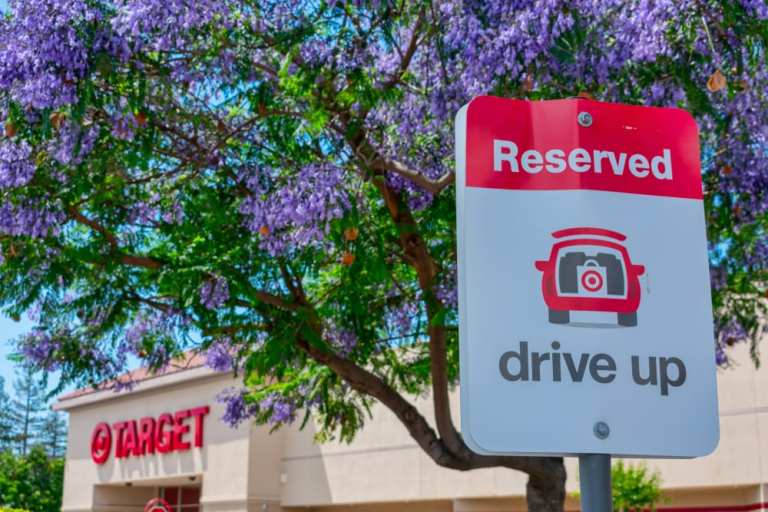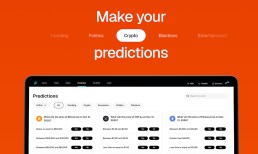Gas stations are encouraging it. Many Main Street SMBs, local restaurants and designer boutiques are doing it for the first time. Fitness clubs have been doing it for a while — but some have gotten into trouble lately for doing it when they shouldn’t have. Uber and Starbucks pioneered it. Digital wallets and apps only work this way.
So what is ‘it’?
Capturing and then enabling card-on-file payments when consumers buy the products or services they consume in the physical world.
As the pandemic has forced the massive digital shift in how consumers and merchants interact in the physical world, and as shops and restaurants in all 50 states begin to reopen, consumers are now worried about the personal health risks related to that reopening, including touching anything that someone else has touched.
Like payments terminals.
Not surprisingly, to make consumers more comfortable shopping and checking out in their stores, retailers have rushed to enable a “contactless” payment experience.
Advertisement: Scroll to Continue
Part of that includes reminding consumers to use their contactless cards when they check out in their stores (if they have one) or their mobile wallets (if they choose).
But given the absence of contactless card penetration in the U.S., the restrictive reopening protocols for most stores and the diversity of shopping experiences that still require a consumer to present a card to check out in a store, many retailers have gotten rather creative in how they define what it means to deliver a contactless payments experience.
Which now includes offering their customers an entirely cardless, card-on-file experience.
Don’t Touch This
One of the best things that happened last week was the reopening of hair salons in Boston.
Every woman in the world understands the necessity of getting her locks restored to their pre-COVID glory after nearly three months of making do with their (hair)dos while under lockdown. Yours truly was among the first in line on day one of my salon’s reopening.
The experience was very professional and exactly what I had expected: masks, gloves, robes, temp checks at the front desk, no coffee or snacks, and social distancing with far fewer stylists and customers in the salon.
The checkout experience was not what I’d expected.
The reception desk had been tastefully fitted with a 5-foot-high, thin plexiglass divider to prevent contact between customers and those manning the reception desk. When it came time to pay, out of force of habit, I pulled out my card. At that point, I realized there was no way to hand the card over, as the plexiglass had no pass-through.
Not to worry, I was told, my charges would be applied to my card on file — an account that I didn’t even realize I had with them, even though I have been going to the same shop for probably six years and have always used the same card to pay. Only digital tips would be accepted, via a personalized QR code for each stylist, powered by Venmo and organized on a large board to the left of the front desk.
There was no receipt to sign — just a completely digital, card-on-file transaction while I was standing in the salon. And that will become this salon’s standard operating procedure going forward.
It doesn’t appear that this experience is exclusive to fancy hair salons in Boston.
As mostly-cash places like spas and nail salons prepare to reopen, they too are adapting their payments processes to a card-on-file option using apps, digital wallets and QR codes. As retail boutiques reopen for curbside pickup only, associates are using channels like SMS or chat to help consumers shop — and then using cards on file to complete the purchases.
Gas stations are advertising card-on-file solutions via their apps and right at the pump for consumers who don’t want to use their cards for fuel. The pump at AllTown, near where I live, was loud and clear about that offer on Saturday when I went to gas up the car — “‘fraid of touching the pump? Just download our app.”
Local restaurants are, too. One of our favorite establishments now has a card-on-file account for me as well. It’s not yet open for dining in, but we support them weekly by ordering food for takeout, as do many other locals. Our orders are placed via text, and charges (including tips) are — you guessed it — now card-on-file transactions. Although I haven’t asked, it seems likely that the restaurant operator will stick with this protocol for regulars when the establishment reopens for dine-in services. Now the whole rigamarole of giving the server a card and waiting for it to come back includes the perception of a personal health risk.
Drugstore chains now nudge their customers to link payments credentials with their apps to avoid having to stand in line to check out when picking up prescriptions. QSRs, among the early adopters of mobile order-ahead with Starbucks in 2015, are reaping the benefits of their head start with credentials on file to expedite the ordering and dining experience, and to eliminate the need for customers to go into the store.
Retailers, merchants and grocery stores are advertising curbside pick up for orders placed online, where payment is made by charging payments credentials stored in their apps, mobile wallets, or even in some cases, card credentials stored on file in their Chrome browser. Walmart has a button on its home page for customers to sort purchases by what can be delivered the next day — paid for via the cards on file in their Walmart Pay accounts.
As merchants have done for as long as customers have been showing up on their doorsteps, they are adapting their payments acceptance protocols to accommodate consumers’ preferences. Now, as always, making a sale is their first, second and third priority — and integrating a broadly defined contactless experience that can scale to all of their customers has also become mission-critical.
Since card on file is the most ubiquitous form of contactless payment right now, that is what they seem to be embracing.
It also makes sense.
Contactless cards have transaction limits that force consumers to enter a PIN on a device that no one wants to touch. Those limits are intended to reduce liability for issuers and merchants. In a pre-COVID world, that wasn’t much of a big deal. But today, things have changed.
In many stores, big and small, contactless readers aren’t an option, since cards still have to be handed to store associates to swipe or dip — that is how their point of sale (POS) and checkout experience is set up.
And even without transaction limits, loyalty programs aren’t integrated at the point of sale when a contactless card is used — again, requiring account numbers to be punched into a device at checkout to get the benefit of the rewards for those purchases.
That’s likely why in PYMNTS’ national study of 14,000 consumers, more than half (58.6 percent) said they expect merchants to offer a way to pay in-store without interacting with a card reader, something they say is 59.7 percent more important than providing a contactless card option at a terminal.
The Payments And Pandemic FUD Factor
PYMNTS just completed the 10th in our series of studies of consumers and Main Street SMBs on the impact of the pandemic on consumer and business behavior. This latest study of a national sample of U.S. consumers, conducted on May 23, is part of a series that started on March 6 before the physical world locked down. We now have studied more than 14,000 consumers and more than 1,200 Main Street SMBs who statistically represent the U.S. population.
The latest study gave us a three-week window into behavior shifts, particularly since quite a number of states had already begun to reopen.
Here are a few of the things we learned.
First, we found an American consumer with cabin fever.
Now, 36.1 percent of consumers are very or extremely interested, and 13.8 percent are extremely interested, in leaving the house — and when they do, they want to do a range of things, including traveling within the good old U.S. of A. Based on data points from other studies, we assume that means mostly by car and even by RV. Getting on an airplane to travel abroad is nearly dead last on the things consumers would like to do (16.4 percent).
The top three reasons for getting out and about remain consistent: seeing family and friends (61.8 percent), going out to eat (56.3 percent) and going to leisure events (44.5 percent). Despite the efficiency of work from home, consumers miss the “office vibe” and getting to see their work colleagues in the flesh, even if it means wearing a mask and maintaining social distance. And for those without a job, going back to work means going back to a paycheck.
We also found that consumers are less anxious about dying from the virus, (28.8 percent, down from 30.2 percent in April). Although that remains one of their main fears, they are more concerned (31.9 percent, up from 27.4 percent in April) about catching and spreading the virus.
This finding is interesting, since it appears to influence consumers’ attitudes about going to stores and restaurants and the digital experiences they continue to use as substitutes.
Nearly two-thirds of consumers uncertainty about going into stores (27.4 percent) and restaurants (21.3 percent) to shop and eat over fears that they may be too crowded, even with social distance restrictions in place. Consumers, concerned about being a spreader (perhaps asymptomatically) still seem uneasy about being part of a crowd, due to fears for not only themselves, but also for their family, friends and co-workers.
So consumers continue to shift, rather dramatically, to interacting with physical-world merchants in a different way, which now means checking out at the point of sale using something that is always within their control: their mobile phone.
The massive shift to digital is one we have documented since the day we published our second report on March 17. Since then, we have observed a nearly five-time increase in the use of restaurant aggregators as a digital substitute to consumers eating in their favorite restaurants since March 6, and a three-time increase since March 17.
We’ve also seen a shift to digital for retail purchases of 3.4 times since March 6, and a 9.5 percent increase in just the last three weeks. We also believe that the leveling-off of grocery that we’ve observed over the last three weeks is related more to the frequency of going to those stores (hoarding is now a thing of the past) rather than a plateau of the use of digital channels for ordering. Curbside pickup at grocery stores continues to increase, with 13.4 percent of all consumers now using the service.
The shift to digital — even over the last three weeks, as grocery stores remained open and accessible and restaurants and retail shops began to open — shows a consumer who not only used digital channels when they had to, but continues to do so because they want to.
The consumers we studied say that merchants across all retail categories have upped their curbside pickup and delivery games, eliminating the earlier frictions associated with unreliable delivery windows or a lack of reliable curbside checkout processes — as they, too, were trying to accommodate these digital shifts.
The result is a consumer who likes these digital options enough to stick with them going forward, because of the experiences they’ve had with those merchants over the last several months.
Far fewer say they will revert to their “old” ways of doing business. Of the 48.2 percent of consumers who have shifted more of their shopping online, 85.7 percent of them, overall, say they’ll stick with those experiences, with 63.3 percent saying they will maintain some of those digital behaviors.
Think about that for a minute. In the last 12 weeks, we have seen 48.2 percent of the adult population embrace digital channels to interact with physical-world merchants in a way they never have — and 104 million (41.3 percent) more who say they will stick with it.
If consumers do what they say they’ll do, we estimate the value of that shift now at $308 billion — up from the $186 billion we calculated only three weeks ago. That’s $245 billion in retail, $37.5 billion in grocery and $25.5 billion in restaurant/food ordering.
And card on file is powering that shift.
From Channels To Touchpoints
The pandemic has amplified the consumer’s embrace of using multiple touchpoints to interact with the merchants they shop. Omnichannel was the label that we, as a payments industry, once used to define the need to make digital a part of physical retail’s shopping and payments experience.
The experiences of the last 10 weeks, with a consumer who has lived her life in a digital-mostly world, has turned that concept on its ear.
Now, it’s about making physical part of the digital experience, and creating an integrated payments experience that bridges any digital or physical touchpoint where consumers and merchants meet to do business.
That’s what consumers want — particularly now, to feel safe.
They want order-ahead for delivery (67.4 percent), order-ahead for curbside pickup (63.4 percent) and touchless payments in-store without interacting with the terminal (59.7 percent). They want to engage with physical-world merchants, but they want to do so digitally, using integrated payments credentials that offer more than just a touchless checkout experience.
That digital, touchless experience is so important that 33.3 percent of the consumers we studied on May 23 said it would influence their choice of merchants. More than 45 percent of the digitally-savvy 30- to 40-year-olds — which we call the bridge millennials with spending power — say that, too.
Retail’s winners will get this and will quickly adapt. So, too, will the ones who enable those experiences — issuers, card networks, PSPs and digital wallets — because being top of wallet has never been more important.
Or more invisible and potentially vulnerable.
It isn’t just consumers who want this, though. My hair salon didn’t just offer card on file to make me feel safe — they did it to make their employees safe, too.
Health Concerns Will Drive Payment Methods For A Long Time
One of the most surprising results of our last study is the estimate of the duration of the pandemic — the time that the consumers we studied say they believe it will take for them to be comfortable resuming their pre-COVID activities.
That is now, on average, 270 days – up 53 days from just three weeks ago, on top of the two-and-a-half months they have already spent in lockdown.
That moves the timeline for most consumers to February of 2021.
During the chitchat with my stylist last week, she mentioned how so many people — men and women — wanted to keep their hair long. She said that the last three months have forced people to live through the awkward growing-out stage to a new, longer length that they now really liked.
That same phenomenon is true for what we are experiencing today with the massive shift to digital, and it’s why so many of the 14,000 consumers we studied say they’ll stick with it. The initial awkwardness of the experience has given way to an efficient and enjoyable one — and has given consumers the chance to find a new digital common ground, and better experiences, with the merchants they shop.
Of course, not all consumers who have switched will stay only-digital, as many of them want to get back into stores. As more contactless cards get into consumers’ hands, of course, they will use them at checkout, particularly for transactions below the limits that don’t require entering a PIN.
But the longer that takes, and the longer consumers feel their personal health is at risk, the more likely they will use mobile devices and card-on-file experiences to remove checkout friction – and to make themselves and the employee or shop owner feel more secure.
So, once all this is in place, why on earth reintroduce the friction of card readers?
The discontinuity that I wrote about a few weeks ago should now be quite evident. The pandemic broke what had been consumers’ typical behaviors across nearly every pillar of their daily lives. An attempt to build a bridge to walk across that break to reach business as usual at some point in the future is missing the opportunity to take the consumer where she wants to be — and in many cases, already is.
And that’s digital-mostly living in a physical world. That means time to embrace all the ways of reducing card friction at the point of physical sale, by putting some muscle into making physical fit into the digital world experience, instead of the other way around.




